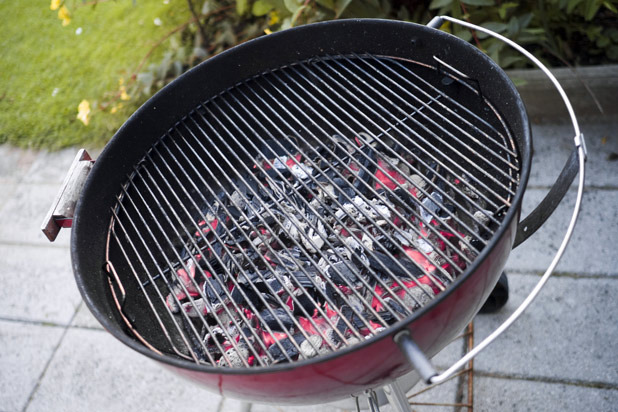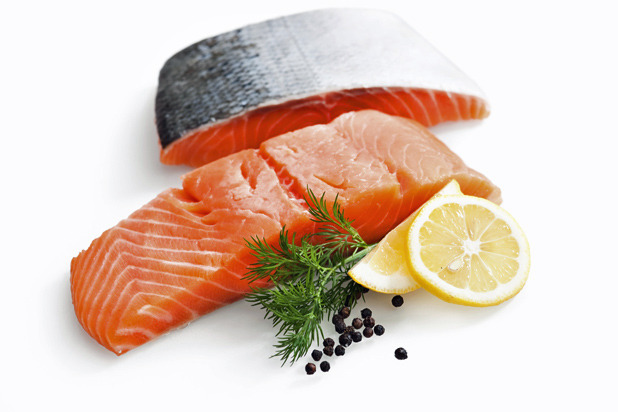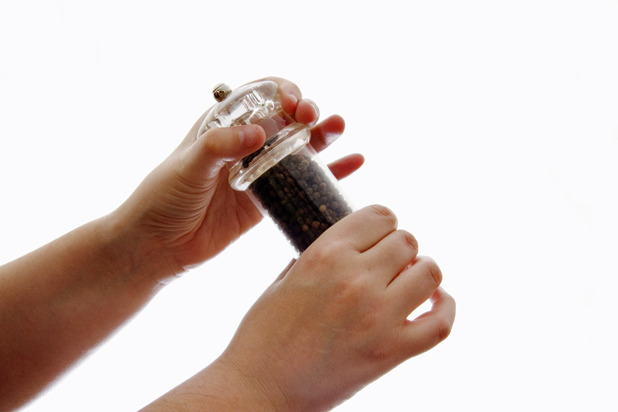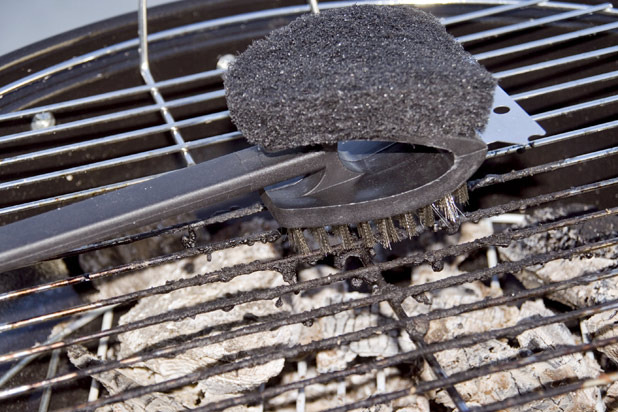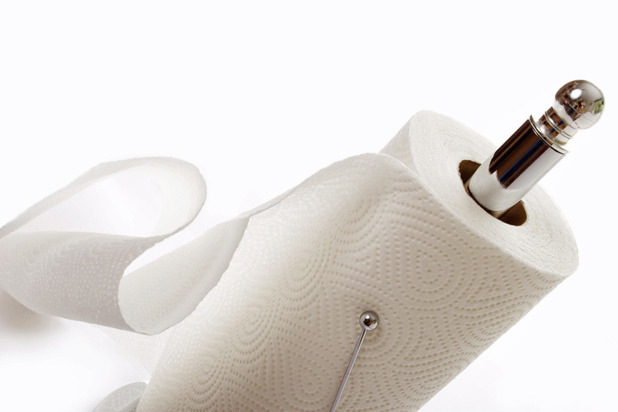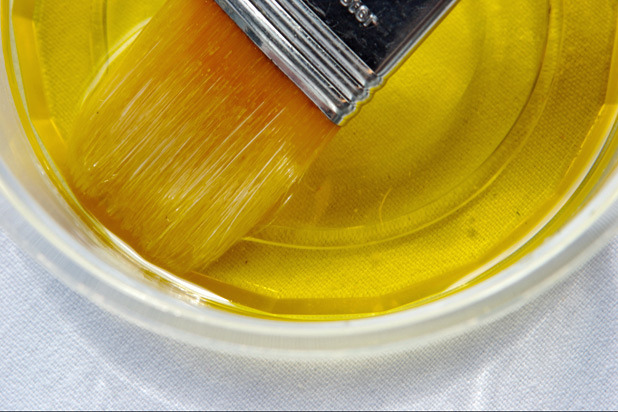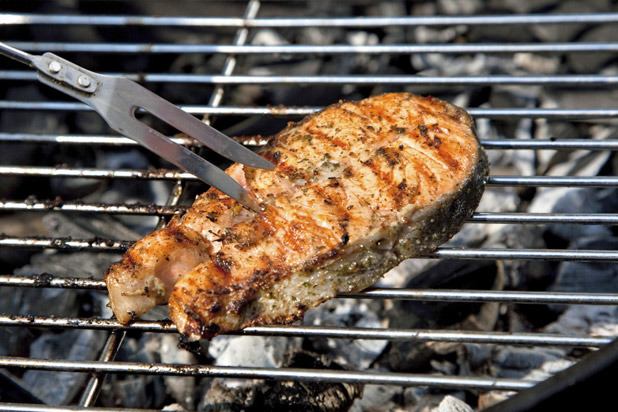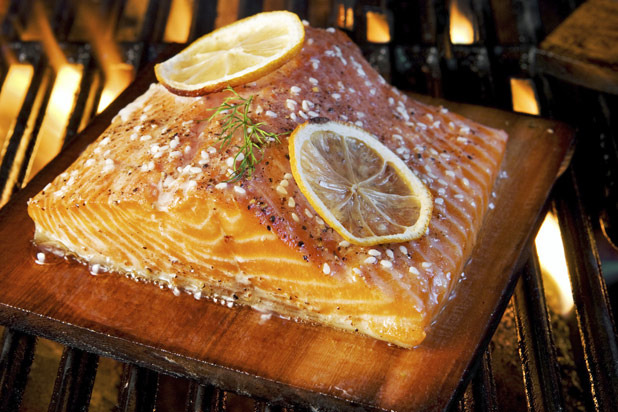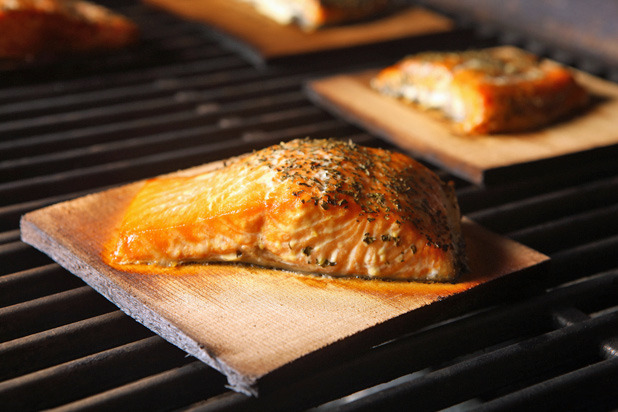How To Grill Salmon Slideshow
Preheat the grill to a temperature that allows you to hold your hand over the flame for no more than 3 seconds without the sensation that you are burning yourself.
2. Warm It Up
Pull your salmon fillet or steak out of the refrigerator 15 minutes or more before grilling. This will bring the fish to room temperature and ensure that the fish will cook evenly without drying out.
3. Season Well, But Watch That Marinade
About 15 minutes before you plan on cooking salmon, season with salt and pepper or whatever seasonings you like. If you choose to marinade, do not let salmon sit in a marinade for more than 15 minutes before cooking. That's because any acid in the marinade will begin to break down the meat, making it too soft.
4. Clean It First
Clean your grill well with a sturdy grill brush, making sure all the carbon is removed and the bare metal is exposed.
Click here to see How to Clean Your Grill Without a Grill Brush.
5. Get Rid of That Water
Blot the salmon with a paper towel to ensure it is completely free from moisture. A moist fish will cause it to stick to the grill.
6. Oil It Up
Brush either the salmon or the grill (or both) with a thin coating of a high temperature oil such as soy or another vegetable oil. If you're brushing the fish, make sure all surfaces are covered with a light coating. Too much oil will cause flare-ups.
7. The Moment You've All Been Waiting For
Place the fish on the grill (skin side down if using a fillet). If you want nice hash marks, wait a minute or two and rotate the fish 90 degrees. Wait another minute or two and flip the fish to the other side. (Don't handle the fish more than necessary, or it will fall apart.) Repeat and serve.
It's crucial to note that cooking times will vary greatly depending on the size and cut of salmon. These cooking times, for example, are for a five- to seven-ounce individual portion.
It's better to watch for the signs rather than rely exclusively on cooking times. Raw salmon will start to turn opaque along the sides as it cooks. For medium rare, you're looking for an internal temperature of about 135 degrees. Most importantly, remember that fish (or any meat) will continue to cook even after it's left the grill, so pull it off a little early. You can always put it back on the grill if it doesn't flake easily with a fork, but you can't undo overcooked fish. And for heaven's sake, let it rest.
8. Quite "Plankly"
If you want to cook on a plank, you need to soak the plank in water for at least an hour prior to cooking; otherwise, it will catch on fire.
9. Plank Procedure
Temper, season, and oil the salmon as outlined previously. Place the salmon on the plank, then place the plank directly on the grill. Cover the grill and cook for approximately 7-8 minutes or until the salmon is your preferred doneness. Ideally, the plank begins to smolder and "smoke" the salmon. If there is no smoke, you can uncover and let the wood start to smoke and then recover.
And for the truly brave, click here to see How to Grill a Whole Fish.
